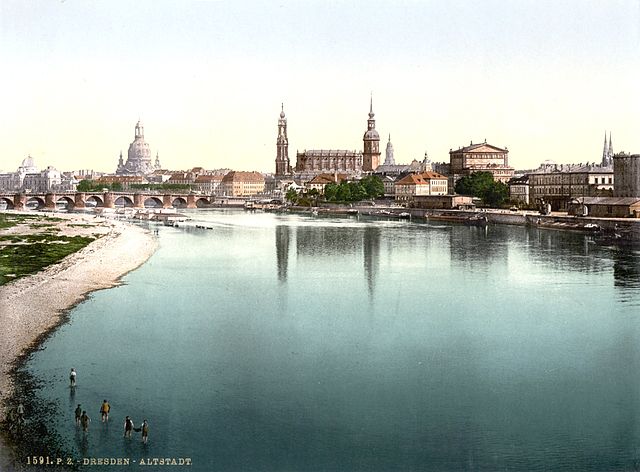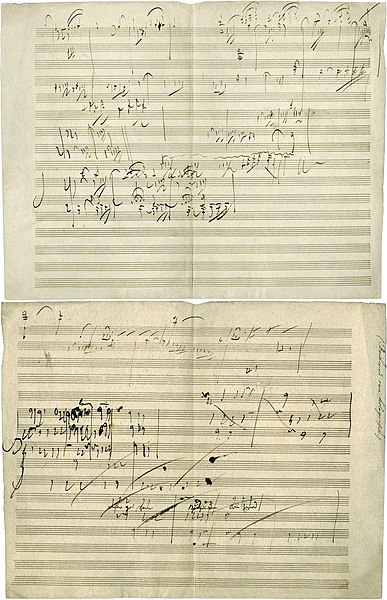Piano Sonata No. 1 (Rachmaninoff)
Piano Sonata No. 1 in D minor, Op. 28, is a piano sonata by Sergei Rachmaninoff, completed in 1908. It is the first of three "Dresden pieces", along with the Symphony No. 2 and part of an opera, which were composed in the quiet city of Dresden, Germany. It was originally inspired by Goethe's tragic play Faust; although Rachmaninoff abandoned the idea soon after beginning composition, traces of this influence can still be found. After numerous revisions and substantial cuts made at the advice of his colleagues, he completed it on April 11, 1908. Konstantin Igumnov gave the premiere in Moscow on October 17, 1908. It received a lukewarm response there, and remains one of the least performed of Rachmaninoff's works.
Dresden sits on the Elbe river, providing a quiet environment for Rachmaninoff (1900)
A piano sonata is a sonata written for a solo piano. Piano sonatas are usually written in three or four movements, although some piano sonatas have been written with a single movement, others with two movements, some contain five or even more movements. The first movement is generally composed in sonata form.
Ludwig van Beethoven's manuscript sketch for Piano Sonata No. 28, Movement IV, Geschwind, doch nicht zu sehr und mit Entschlossenheit (Allegro), in his own handwriting. The piece was completed in 1816.


